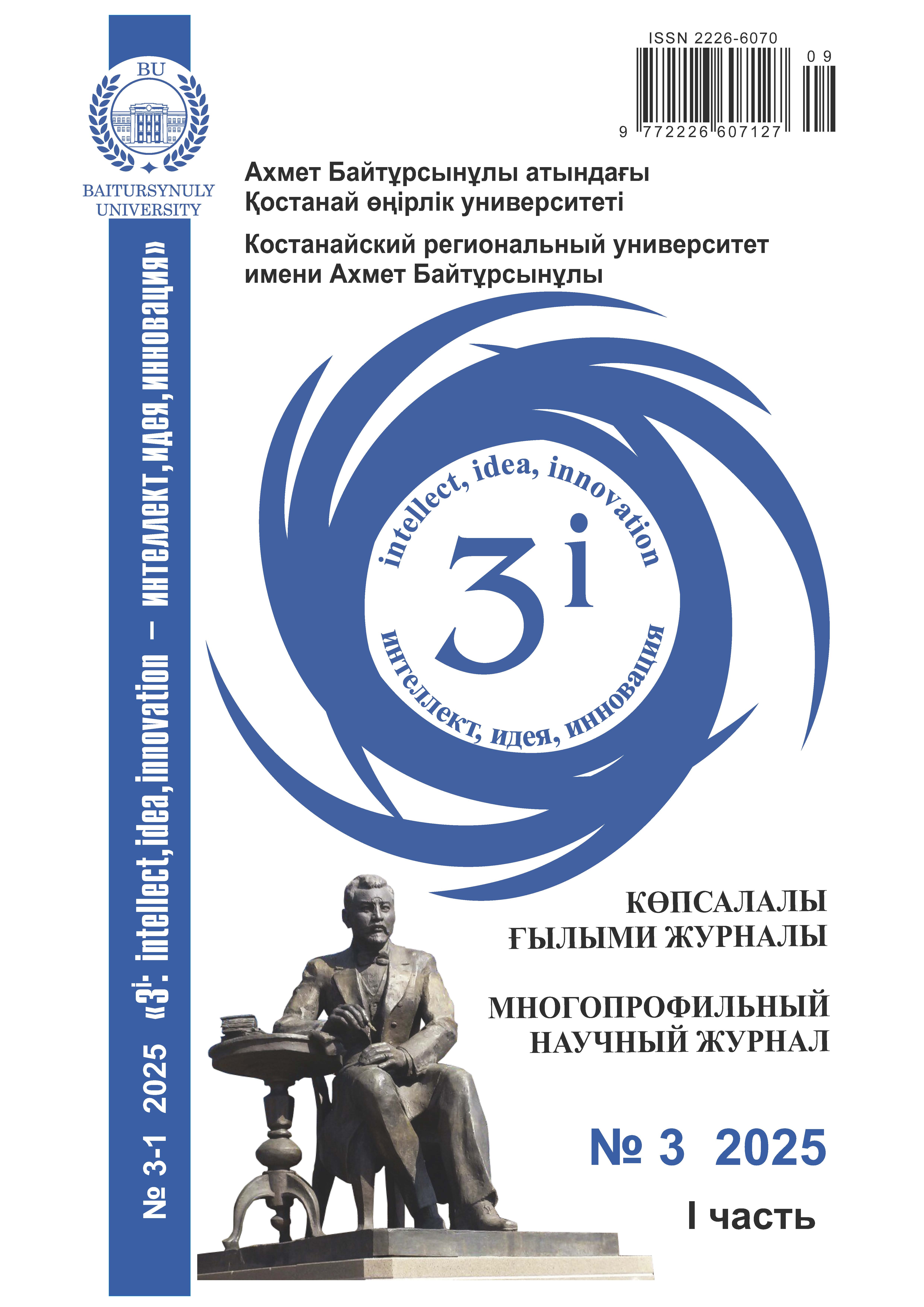ҰРЫҚТАНДЫРУ АЛДЫНДАҒЫ ГЕНИТАЛИЯНЫҢ ЖАЙ-КҮЙІН АНЫҚТАУ КЕЗІНДЕ ЖӘНЕ СИЫРЛАРДЫ ЖАСАНДЫ ҰРЫҚТАНДЫРУ КЕЗІНДЕ ALPHA VISION АСПАБЫН ҚОЛДАНУ ТИІМДІЛІГІ
DOI:
https://doi.org/10.52269/KGTD253148Кілт сөздер:
жасанды ұрықтандыру, AlphaVision аппараты, ректоцервикалды ұрықтанды ру, голштейн тұқымы, жыныстық цикл, вагинит, цервицит, эндометритАңдатпа
Қазіргі таңда Қостанай облысында мал шаруашылығын қолдан ұрықтандырушы мамандармен қамтамасыз ету мәселесі өзекті болып отыр. Асыл тұқымды ауыл шаруашылығы кәсіпорындарының барлығы дерлік ұрықтандырудың ректоцервикальды әдісін қолданады, оның артықшылықтары мен кемшіліктері бар. Басты кемшілік – үлкен жұмыс тәжірибесі бар білікті кадрларға қажеттілік, оның тапшылығы өткір. Мақалада Қостанай облысындағы үлгілі шаруашылықта сауын сиырларының репродуктивті мүмкіндіктерін зерттеу нәтижелері берілген. Сүтті мал шаруашылығы жүйесінде ұрпақты көбейтуге арналған заманауи құрылғыны (жасанды ұрықтандыру және репродуктивті ауруларды диагностикалауға арналған AlphaVision құрылғысы) пайдаланудың тиімділігі зерттелді. Зерттеу жұмысы авторлық диссертацияның бір бөлігі ретінде орындалды. Жұмыста биотехнологиялық көбею әдістерінің – жатыр мойнын AlphaVision визуалды ұрықтандыру жүйесімен тік ішекті бекіту арқылы жатыр мойнын ұрықтандыру әдісінің (дәстүрлі әдіс) салыстырмалы талдауы берілген, сонымен қатар сиырлардың ұрпақты болу органдарының кейбір патологияларын диагностикалауда оны қолданудың тиімділігі зерттеледі. Біздің Қостанай облысының жағдайында жүргізілген ғылыми-зерттеу жұмыстары мен өндірістік сынақтар Alphavision (Франция) көрнекі ұрықтандыру жүйесін қолдану өнімді ұрықтандырудың жоғары техникалық білімі жоқ ректоцервикалды ұрықтандыру әдісімен салыстырғанда 33,7%-ға (көктемде) және 21%-ға (күзде) ұлғаюына ықпал еткенін көрсетті.




